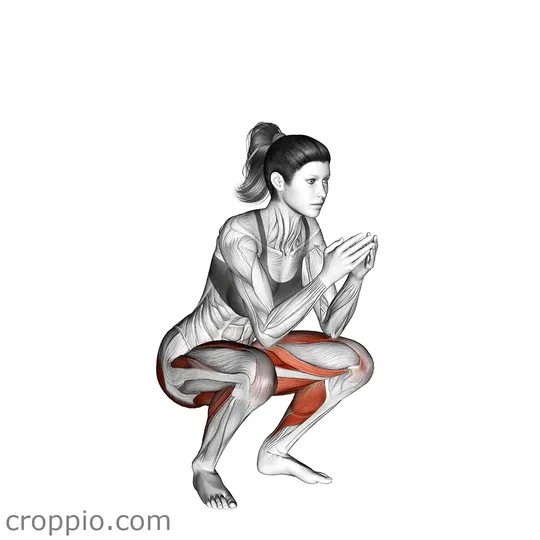Frog Squat

Muscles Involved
The frog squat is a dynamic exercise that primarily targets the lower body muscles. The major muscles engaged during the execution of this movement are the quadriceps, hamstrings, and glutes. Additionally, the frog squat also works the adductors in the inner thighs as the legs are positioned wide. Secondary muscles involved include the calves and the stabilizing muscles in the core, which are activated to maintain balance and support the spine throughout the motion.
Top Mistakes
- Leaning Too Far Forward: This can place undue stress on your lower back and reduce the effectiveness of the exercise.
- Incorrect Foot Placement: Placing feet too close together or not angled outward can limit range of motion and engage the wrong muscles.
- Rounding the Back: Failing to maintain a neutral spine can lead to injury and decreases stability during the squat.
- Not Lowering Enough: Half-hearted squats fail to engage muscles effectively, limiting the benefits.
Execution Tips
- Start in a Standing Position: Stand with your feet wider than shoulder-width apart and toes pointed slightly outward.
- Lower Your Body: Bend your knees and lower your hips down toward the floor while maintaining an upright torso.
- Keep Your Chest Up: Focus on keeping your chest lifted and shoulders back, which encourages a neutral spine.
- Depth Matters: Aim to lower your hips until they are in line with your knees, ensuring adequate range of motion.
- Engage Your Core: Tighten your core muscles to help stabilize your body throughout the squat.
Workouts
The frog squat can be seamlessly integrated into various workout routines. It is effective as part of a lower body strength program, cardio workout, or mobility session. A recommended routine might include: 1. Warm-up: 5-10 minutes of dynamic stretching focusing on the hips and legs. 2. Sets and Reps: Perform 3 sets of 10-15 frog squats. 3. Complementary Exercises: Incorporate lunges and hip bridges for a well-rounded lower body workout. 4. Cool Down: Follow with stretching to maintain flexibility.
Conclusion
The frog squat is an excellent exercise that enhances lower body strength, flexibility, and mobility. By effectively engaging multiple muscle groups and promoting proper squat mechanics, it helps improve overall athletic performance and can reduce the risk of injury. Regular inclusion of frog squats in your workout routine can lead to stronger legs, improved hip alignment, and increased stability, making it a valuable addition for fitness enthusiasts at all levels.



